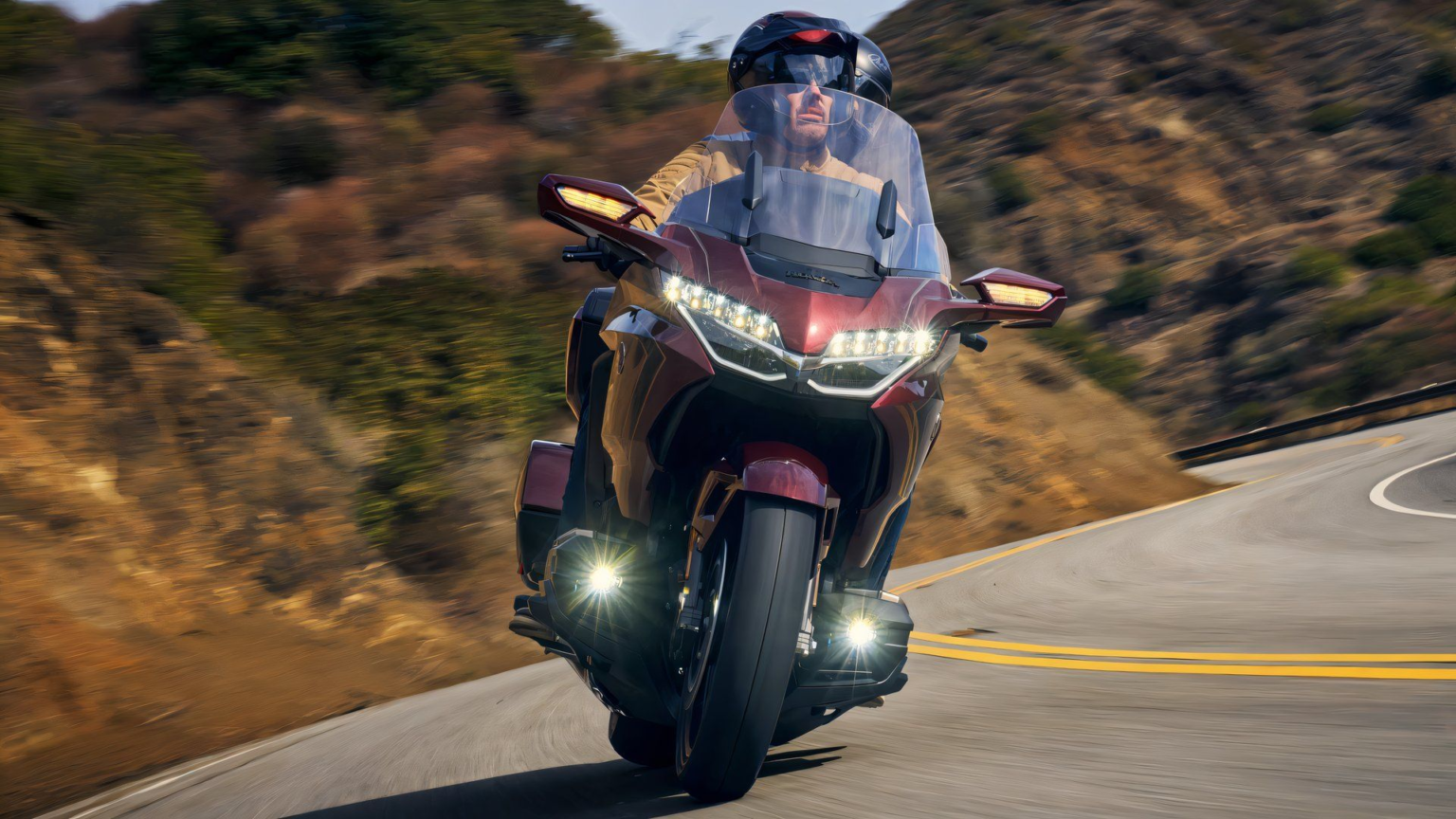Advanced Rider Assistance Systems (ARAS) are poised to be a hot commodity for the next wave of tech-savvy motorcycles. Indian Motorcycle is working on a superior version of radar tech, and Yamaha has patented technology to add anti-tipping and collision detection, too. Honda, though, has been trailing in this race. But if the recently surfaced patent filings are to be believed, then the Japanese giant has been hard at work. Proposed to be equipped on the Gold Wing touring bike, its take on a lane departure warning system is clever and unique, which adapts according to the riding style.
Honda Is Working On A Lane Departure Warning System For Motorcycles
That Understands Lane-Splitting
The lane departure system is not a new technology in the world of automobiles. It is available in cars and works by analyzing the line of motion. If the car sways out of a lane or even comes close to the lane-dividing centerline, it beeps and flashes to alert. However, things are not straightforward on a motorcycle, mainly because the narrow form factor allows for lane-splitting.
Motorcycles filter through traffic and ride on the lane markings, which makes a “standard” lane departure system useless on a motorcycle. This is where Honda has cleverly integrated a system to recognize filtering and avoid unnecessary warning flashes all the time by modifying the functioning of the lane departure system. Honda’s ARAS technology utilizes a radar and a single camera pointing ahead.
The radar recognizes other vehicles ahead and tweaks the adaptive cruise control parameters. The camera recognizes the road marking and activates the lane departure warning. This system works exactly like that of a car in normal situations. However, when lane-splitting, Honda’s ARAS tech utilizes an additional programming layer with a timer to set off the assist if and only when the driver has not intentionally decided to lane-split.
The initial lane-departure warning system alert gets activated when the motorcycle crosses the lane divider marking. Now, the camera monitors the motion of the motorcycle. If, within the set time period (the patents mention a 3-second window), the lane departure warning gets triggered again, it means that the motorcycle is still above the centerline, which in turn means that it is a case of lane-splitting. The system then suppresses the warning, indicating that it has accepted the intentional lane-splitting maneuver.
Honda Gold Wing Will Most Likely Be The First Bike To Have This Tech
The patent images show the outline of a Honda Gold Wing flaunting the new ARAS technology. So, we suspect Honda’s version of the lane departure system will be initially equipped on the Gold Wing. This also makes sense since this six-cylinder motorcycle is Honda’s gold standard for touring, and its bulk and size need this level of assistive tech when on the road. Besides having a clever lane departure system, Honda’s ARAS tech also gets recalibrated when lane-splitting to enhance the collision warning function of the front radar by slimming and elongating the scanning area, so as not to get triggered by cars passing by closely.
All Other Features Will Mostly Remain Unchanged On The ARAS-Equipped Gold Wing
But We Can Expect A Notable Bump In Pricing
Since all the patents above focus on lane-splitting technology and its electronic components, we suspect the proposed Honda Gold Wing models equipped with this tech to be unfazed regarding performance, underpinnings, and hardware. It will likely continue to be powered by the biggest Honda motorcycle engine—the 1,833 cc flat-six.
Expect the unique chassis that actually utilizes the “hanging” engine as a stressed member to remain the same, too. The frame is suspended on a double-wishbone front suspension up front and a monoshock atop a single-sided swingarm at the rear. We can, however, expect a notable bump in pricing owing to the implementation of the proposed new and sophisticated technology upgrade.
2025 Honda Gold Wing Tour Specs For Reference
|
Engine Configuration |
Horizontally-opposed Six-cylinder; Liquid-Cooled |
|
Engine Displacement |
1,833 cc |
|
Bore X Stroke |
2.874 X 2.874 in. (73 X 73 mm) |
|
Compression Ratio |
10.5:1 |
|
Power |
124.7 HP |
|
Torque |
125.3 LB-FT |
|
Fuel System |
PGM-FI Electronic Fuel Injection |
|
Transmission |
6-Speed Manual / 7-Speed Automatic DCT |
|
Chassis |
Aluminum die-cast twin-spar frame |
|
Front Suspension |
Double wishbone; 4.3 inches travel |
|
Rear Suspension |
Pro-Arm single-sided swingarm with Pro-Link monoshock; 4.1 inches travel |
|
Front Brakes |
Dual 320mm floating discs with six-piston calipers, sintered pads |
|
Rear Brakes |
316 mm disc with three-piston floating caliper, sintered pads |
|
Length |
102.9 inches |
|
Wheelbase |
66.9 inches |
|
Rake / Trail |
30.5 degrees / 4.3 inches |
|
Seat Height |
29.3 inches |
|
Ground Clearance |
5.1 inches |
|
Curb Weight |
845 pounds (6-Speed Manual) / 847 pounds (7-Speed Automatic DCT) |
|
Price |
$28,700 (Manual) / $29,700 (Automatic) |
Read the full article here


